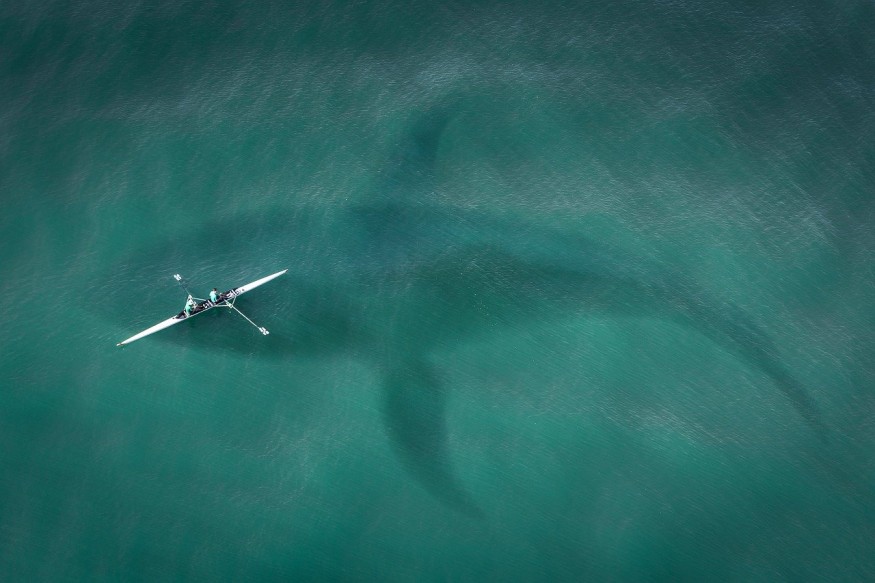Megalodon was the largest shark that ever roamed the planet about 23 million to 2.6 million years ago. Its fossilized teeth measuring about 18 centimeters long, helped scientists estimate the size of their whole body.
Now, an international team of researchers, in collaboration with the University of Zurich, created a 3D model of a megalodon to gain new insights into the apex predator.
Reconstructing a Megalodon
The team used the well-preserved vertebral column of a megalodon left behind in fossil records after it died in the Miocene oceans of Belgium, according to the news release via EurkeAlert! The fossil was first discovered in the 1980s and scientists said it belonged to one megalodon shark.
Jack Cooper, the first author of the study and a Ph.D. candidate at Swansea University, said that shark teeth are the common megalodon fossils found because they are hard to decompose and serve as a well-preserved remnant of the giant shark.
Their teeth fossils are unlike their skeletons made of cartilage that are easily fossilized. That means the vertebral column from the Royal Royal Belgian Institute of Natural Sciences is one-of-a-kind.
The team is made up of researchers from Switzerland, the UK, the US, Australia, and South Africa who measured and scanned every single vertebra to reconstruct the entire spinal column of the extinct shark. Then they attach the column to a 3D scan of the dentition of a megalodon from the US.
They also attached a "flesh" around the skeleton using a 3D scan of a great white shark from South Africa to complete the model. Co-author John Hutchinson, a professor at the Royal Veterinary College in the UK, said that the animal's weight is an extinct animal's most important trait, so they used D digital modeling methods to create a link between their mass, speed, and energy usage.

ALSO READ : Unbelievable! Study Reveals Actual Size of Megalodon Shark, One of the Largest Fish to Ever Exist
Megalodon Sharks Have Orcas for Breakfast
In the study titled "The Extinct Shark Otodus megalodon Was a Transoceanic Superpredator: Inferences From 3D Modeling," published in Science Advances, the authors wrote that the 3D model shows the megalodon was approximately 16 meters long and weighed more than 61 tons. Scientists estimated it to swim at 1.4 meters per second and requires 98,000 calories per day with its large stomach that has a volume of almost 10,000 liters.
These findings suggest that the megalodon can eat its prey as big as orcas or about 8 meters long with just five big bites and roams the seas without food within two months.
"These results suggest that this giant shark was a trans-oceanic super-apex predator," says Catalina Pimiento, Professor at the University of Zurich and senior author of the study, per EurekAlert!. "The extinction of this iconic giant shark likely impacted global nutrient transport and released large cetaceans from a strong predatory pressure."
Researchers also hypothesize that megalodon sharks could have eaten the iconic predator Tyrannosaurus rex in just three bites. More so, swallowing whole great white sharks will be easy for them to do.
In an article in The Conversation, researchers wrote that the findings also reveal that megalodons could have cruised the seas at 5 kilometers per hour, which is faster than the filter-feeding whale shark or even the great white shark that can swim up to 3 kilometers per hour.
Their speeds increase their chances of encountering their prey and enable them to move quickly to take advantage of the changes in the season when prey is abundant. Analysis from the model suggests that megalodons most likely eat orcas for breakfast for them to travel 7,000 kilometers in the sea and then feed again.
The team noted that no creature at that time was safe from the jaws of megalodon sharks, and their extinction must have caused significant effects on marine ecosystems.
RELATED ARTICLE: Terrifying Megalodon Had a Massive Penis About The Size of a Great White Shark, Expert Says
Check out more news and information on Sharks in Science Times.












